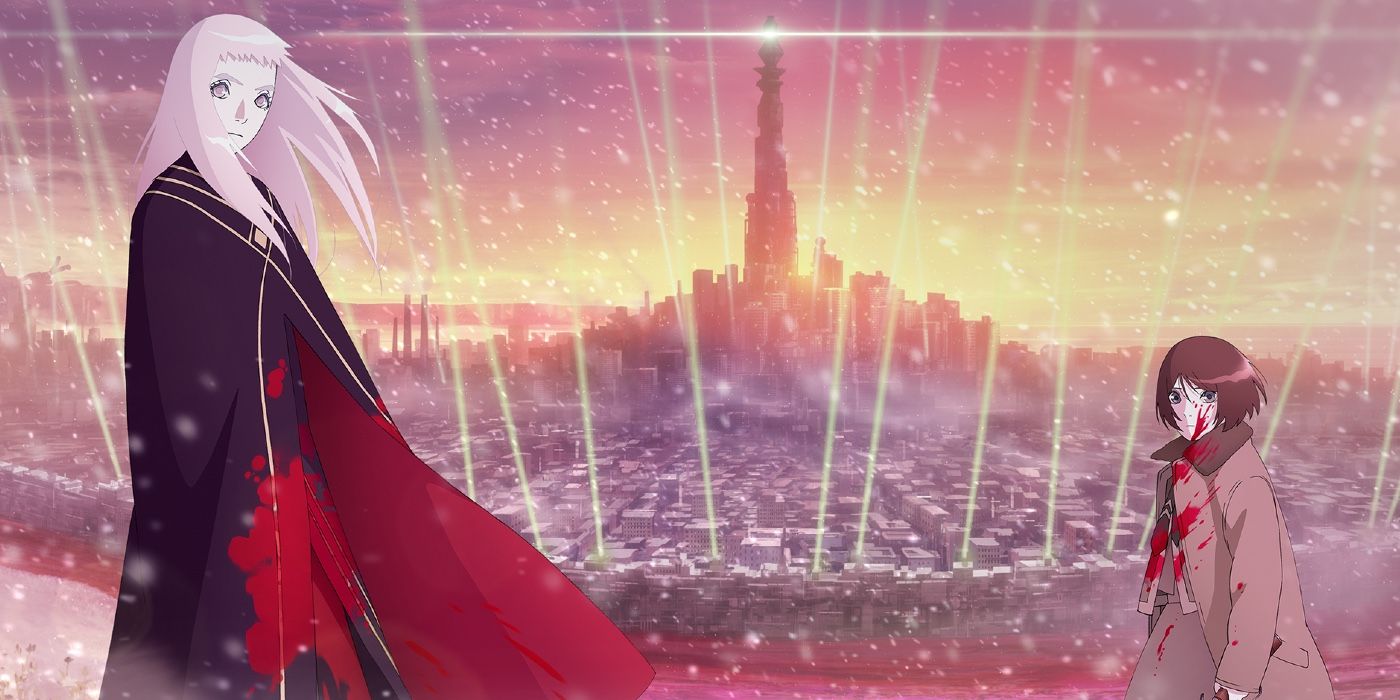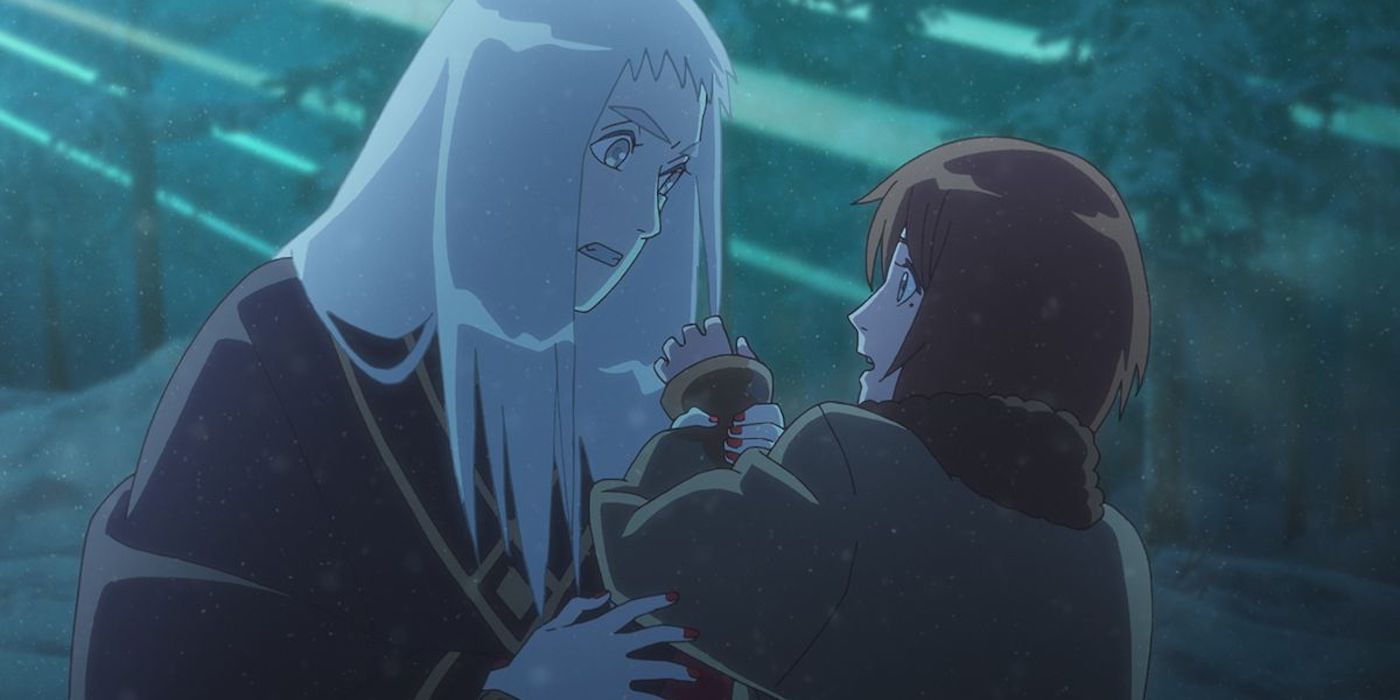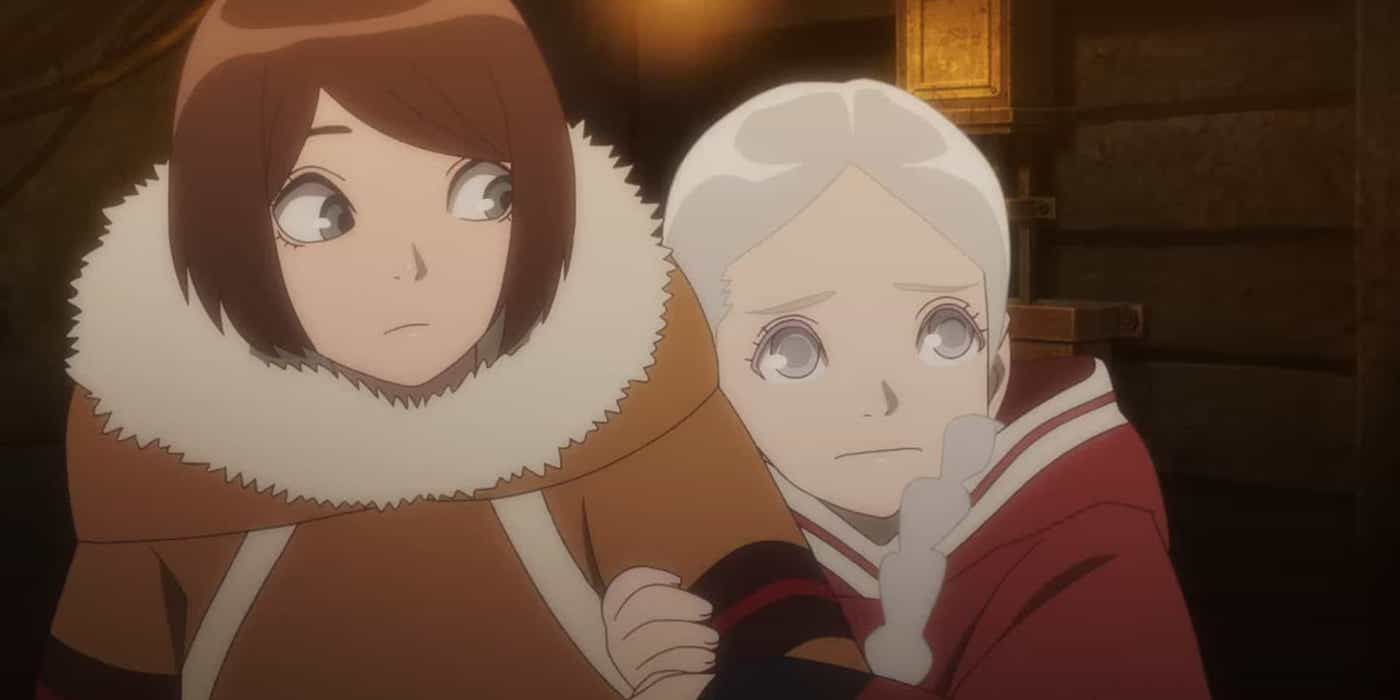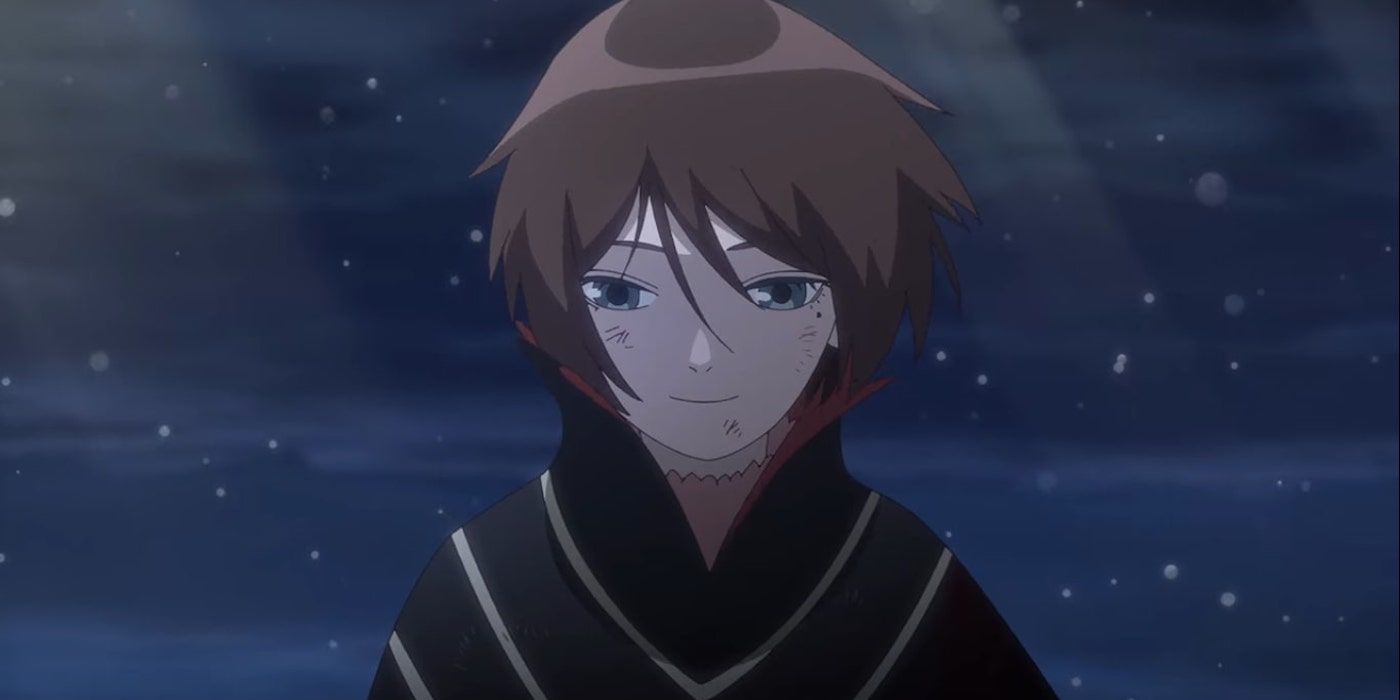The following contains spoilers for Vampire in the Garden, now streaming on Netflix.
With Netflix situating themselves as a massive licensor in the anime industry, hidden gems can fall through the cracks, going unnoticed by anime fans. While the recent film Bubble received attention due to its stellar staff, Wit Studio's other recent contribution to Netflix's lineup was met with whispers. Being a passion project for scriptwriter, storyboard artist, and director Makihara Ryoutarou -- who has worked on several high profile projects such as Attack on Titan -- Vampire in the Garden is an electrifying series that deserves more attention from the community.
Blending high fantasy with steampunk, Vampire in the Garden is a masterful five episode journey that showcases Makihara's unique storytelling and is an absolute must-see for fans of vampires, sci-fi fantasy, dystopian tropes, or those who simply appreciate a strong narrative depicted alongside beautiful animation and a haunting soundtrack from composer Ike Yoshihiro.
What Is Vampire in the Garden About?
Like many vampire stories, Vampire in the Garden follows the disputes between humanity and vampires. The story wastes no time thrusting the audience into war, but unlike other series, where humankind are always heroes, Vampire in the Garden begins with a human raid on a derelict building, soldiers armed with special green lights and machine guns ambush starving vampires, cutting them down. Momo, a fourteen-year-old soldier, discovers a small room where a vampire child is attempting to hide, and the child tries to plead for her life, however, Momo's life is suddenly threatened when a vampire injects himself with an enhancing drug, guaranteed to kill him but allows him to slaughter multiple human soldiers. Momo's superior defeats the enhanced vampire, as well as the child. Momo takes a music box that belonged to the child, becoming entranced by the mysterious vampire race.
Meanwhile, the miserable vampire queen Fine has lived in solitude since the loss of her lover. While she keeps up with her royal duties, she spends as much time as possible isolated from the world. When an attack on a human settlement goes wrong, Fine is drawn to Momo muttering the tune of the music box, just as her lover had so long ago. She gives the Momo the option to come with her to try finding a place where humans and vampires can live together, or stay in her close-minded human society. Two unlikely allies begin their journey, evading both human and vampire pursuers, seeking a place they can be at peace.
Gender and Sexuality in Vampire in the Garden
Vampire in the Garden is not a nuanced study of gender politics in the way one might expect. Makihara does not attempt to force a lesson about gender equality, nor are female characters required to perform feats of strength or bravery to prove themselves worthy. The only character who faces challenged sue to her gender is Momo's mother, a leader in the human military who must defend her position against male competitors.
However, Makihara chose to tell a story about women -- complex and meaningful with dynamic relationships. Women don't typically get the chance to be in the spotlight in shonen series, especially without being sexualized or being designated a sidekick or love interest. In Vampire in the Garden, however, Momo and Fine are written to compliment each other's strengths and weaknesses, allowing the two women to grow as characters over the course of the series. The result is a story that solidifies a feminist message without ever feeling preachy, made stronger by the inclusion of LGBT characters as well.
The casual inclusion of a lesbian main character is a huge step forward in a shonen anime. Fine is introduced dancing with a woman, clearly having loved a woman in her past. While baiting LGBT characters is quite common, teasing the audience through actions that are often argued as platonic relationships, Fine is strictly attracted to women, with none of the negative stereotypes that often follow lesbian characters. Though she is a vampire, she is never predatory, and it is her love that makes her want to avoid drinking blood.
While Momo's sexuality is never defined in the same way, she too avoids stereotypes, creating relationships with people based on their values, not their identities. Fine is never once criticized for being a lesbian, rather, she's only ever criticized for falling for a human, creating a world that, while torn apart by war, is simultaneously inclusive. The result is a story that members of different communities are able to connect and relate to.
War and Ethics
Vampire in the Garden is a nuanced tale depicting the consequences of war. Shown early on, humans and vampires have grown accustomed to hunting one another. Humans have separated themselves from the arts and culture in favor of a militaristic society, while vampires have done the opposite, indulging in hedonistic pleasures -- even if it has lethal consequences. Reminiscent of the dichotomy between George Orwell and Aldous Huxley, with Orwell's dystopias being societies stripped down to the basics, and Huxley believing society's ruin would come through overindulgence. The contrast between the two, and especially the contrast between how both humans and vampires are in the wrong makes Vampire in the Garden a nuanced, philosophical journey.
With only five episodes for an easy binge-watch, Vampire in the Garden excels in its character, story, visuals, and soundtrack, making it one of the best dystopian fantasy anime to date. It is, at the very least, one of the best anime Netflix has released this year, and a major triumph for creator Makihara Ryoutarou. For anyone with interest in vampire anime, or for those who need to have their faith in the genre restored, Vampire in the Garden is a must-watch.






